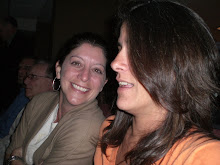Critical elements of learning theories include observation, interaction, analyzing, interpreting, evaluating, understanding or cognitivism, as well as problem solving and solutions. Driscoll (2000) discussed these critical elements, however, failed to include the theory of cultural reproduction or culture of mathmatics. Cultural reproduction or enculturation in the educational setting is the passing down of the culture’s important pieces from generation to generation (Leonard, 2002). According to Leonard, (2002) culture of mathematics has the learner develop a mathematical way of thinking in which theories in math and its’ applications can build on their understanding of the world and the society in which they live.
Siemens (2008) applies a more in-depth conveyance of the different learning theories through the five questions to identify them. They include:
1. How does learning occur?
2. What factors influence learning?
3. What is the role of memory?
4. How does transfer occur?
5. What types of learning are best explained by this theory?
In addition, Seimens (2008) lays it all out in a table that depicts the theories of behaviourism, cognitivism, constructivism, and connectivism with the properties of each.
Seimans (2008) also describes the various “metaphors as educators” in a clear, concise manner. Each educator is set in a role that promotes learning through various methods of understanding. The educator as master artist permits students to work in a setting that inspires creativity and open-mindedness, allowing their ideas to flow unrestricted. The educator as network administrator enables students to build networks of communication with each other. Educator as concierge guides students to find the resources needed to build on their learning experience, similar to the educator as curator, where the teacher will “foster and encourage learner exploration” (Seimens, 2008,p.17).
There is not one specific model that an instructor should or “needs to” take in order to facilitate learning, rather, a mixture of the aforementioned models would be necessary in any classroom or online program in order to meet the diversified needs of students.
Reference:
Driscoll, M. P. (2005). Psychology of learning for instruction (3rd ed.).
Leonard, D.C. (2002). Learning theories, a to z. Santa Barbara: Greenwood Publishing.
Retrieved from http://books.google.com/books?id=vAaQd0ks0p0C
Siemens, G. (2008, January 27). Learning and knowing in networks: Changing roles for educators and designers.
Paper presented to ITFORUM. Retrieved from http://it.coe.uga.edu/itforum/Paper105/Siemens.pdf

I agree with your assessment of the role of teaching models in learning, that, “There is not one specific model that an instructor should take in order to facilitate learning, rather, a mixture of the aforementioned models would be necessary in any classroom or online program in order to meet the diversified needs of students” (Quin, 2009). This is why I take exception to Driscoll, et al’s (2008) criticism of eclecticism, cautioning that, “eclecticism, at the level of philosophical assumptions, is confusing and unproductive” (p. 57, par. 7). I believe that different instructional models are most effective for different instructional tasks and students, and that educators should be knowledgeable about various learning theories so that they can use or combine elements of them that best meet the needs of their students at a given time.
ReplyDeleteAlthough Driscoll (2000) did not discuss the theory of cultural reproduction or culture of mathematics, I do not view this as a weakness in her analysis of learning theories. I believe her reference to the critical elements of interaction, analysis, interpretation, evaluation, cognitivism, and problem solving can be applied to a variety of theories and utilized in the development of new learning theories. You mentioned the theory of cultural reproduction and the culture of mathematics, but there are many other theories that were not included as well. These include Error Factor Theory (error-factor theory, 2009), the Theory of Multiple Intelligences (Gardner, 1985), Second language acquisition theories (Cummins, 2003; Krashen, 1985) and many others. I think Driscoll’s intention was to provide a generic framework that would facilitate understanding and development of any learning theories.
Lisa Rodriguez
Cummins, J. (2003). Dr. Cummins' ESL and second Language learning web. Retrieved from http://www.iteachilearn.com/cummins/.
Driscoll, M.; Merrienboer, J.; Merrill, M.; and Spector, J. (2008). Handbook of research on educational communications and technology. New York: Lawrence Erlbaum Associates.
error-factor theory. (2009). In Encyclopedia Britannica. Retrieved June 13, 2009, from Encyclopedia Britannica Online: http://www.britannica.com/EBchecked/topic/191942/error-factor-theory
Gardner, H. (1985). Frames of mind the theory of multiple intelligences. New York: Basic Books.
Krashen, S.D. (1985). Inquiries and insights. Hayward, CA: Alemany Press.
Quin, D. (2009). Critical elements of a learning theory. Retrieved from http://educationbyquin.blogspot.com/2009/06/critical-elements-of-learning-theory.html.